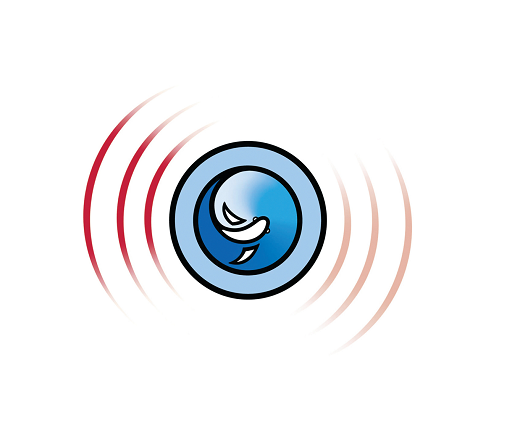[latexpage] It is important to know that decibels, ($dB$) are not an expression of a specific quantity or amount, rather decibels is an expression of relative quantities or amounts. The term “$0 dB$” is not a measure or expression of nothing, but rather it is the reference point for the specific decibel scale in question.
In acoustics, the decibel is used to evaluate energy levels in terms of Sound Pressure Level (SPL,) with the term “$dB_{SPL}$”. By convention, $0dB$ refers to any specific reference point. The reference point for airborne SPL equates to the lowest threshold of human hearing which happens to be $0 dB = 20 microPascals$ ($20 {mu}Pa$) – a convenience tailored to a known pressure quantity relative to human perception. This measure has no significance underwater, so the reference level for ocean sound shifts down to a mathematically more convenient number – to a reference point of $0 dB = 1 {mu}Pa$.
The mathematical consequence of this is a numerical shift of $26 dB$. This simply means that any specific SPL number expressed relative to 20 ?Pa will be $26 dB$ less than that same number expressed relative to $1 {mu}Pa$. Two simple mathematical expressions for this are:
$ 0 dB_{SPL} re: 20 {mu}Pa = -26 dB_{SPL} re: 1 {mu}Pa $
and
$ 0 dB_{SPL} re: 1 {mu}Pa = +26 dB_{SPL} re: 20 {mu}Pa $
Both of these equations express the same sound pressure level regardless of the medium. It is the same amount of energy in air, water, wood or steel.
The decibel is also a logarithmic scale. Logarithmic scales are a way of expressing orders of magnitude in simple numbers without having to print out lots of zeros in an equation. This means that every increase of $10 dB$ represents a tenfold increase of energy. $10 dB$ is ten times greater than $0 dB$, $20 dB$ is 100 times greater, $30 dB$ is 1000 greater, $60 dB$ is 1,000,000 times greater and so forth.
A direct “apples to apples” comparison of how decibels work:
Putting sound into numerical terms can be confusing to almost anyone not specifically engaged in evaluating sound with numbers. Sound is not perceived in numerical terms, but is usually described in terms of “Quiet,” “Loud,” and “Excessive.” Coming to terms with the numbers is aggravated by the use of decibels to express sound levels. Decibels are not an expression of a specific quantity, rather they are an expression of relative quantities or amounts, expressed in terms of relative orders of magnitude.
Decibels becomes a useful tool when working with large ranges of numbers such as 1, 100, 1,000,000 and 1,000,000,000. It is a way of keeping lots of “zeros” from confusing your math.
In order to take advantage of decibels, you first need to establish a useful quantity that the dB scale relates to. This sets your “$0 dB$” reference. From that point, every number in dB expresses a relationship to that “$0 dB$ point.” This relationship is in terms of factors of 10 (hence the word decibel.) Every increase of $10 dB$ indicates a ten-fold increase in quantity, i.e.: $0 dB = 1, 10 dB = 10, 20 dB = 100, 30 dB = 1,000$, and so forth.
To put this in tangible terms we will express relative quantities of apples in terms of $dB$.
For me, a single apple is a useful number of apples, so I can express one apple as “$0 dB_{apple}$” A bag of 10 apples is “$10 dB_{apple}$”, a bushel of 100 apples is “$20 dB_{apple}$” and a trunk load of a 1000 apples is “$30 dB_{apple}$”. Beyond this number, quantity of apples is not useful to me. For an industrial distributor of apples, a single apple is not a useful reference point, so they might use a trunkload of 1000 apples as their reference point of “$0 dB_{APPLE}$”. For them, a storage unit of 10,000 apples is “$10 dB_{APPLE}$”, and a boxcar of 100,000 apples is “$20 dB_{APPLE}$”, and a cargo ship of 1,000,000 apples is “$30 dB_{APPLE}$”. As long as we know that “$0 dB_{apple}$” is a single apple and “$0 dB_{APPLE}$” is 1000 apples, we can keep track of how many apples we have. The difference between “$0 dB_{apple}$” and “$0 dB_{APPLE}$” expressed in mathematical terms is:
$ 0 dB_{APPLE} = +30 dB_{apple} $
and
$ 0 dB_{apple} = – 30 dB_{APPLE} $
The conversion factor between these numbers is $30 dB$.


